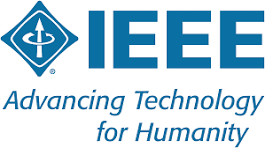- Technological and geopolitical disruptions redefine India’s risk landscape, creating both challenges and opportunities.
- Cyber and Legal/Regulatory Risks lead the short-term risk rankings, and Cyber and Technology Risks lead the long-term risk rankings for 2025. While Talent Risk continues to be a persistent priority.
- Risk Culture lags behind Process Maturity — true resilience demands ownership from the top.
- Despite improved Preparedness, gaps persist in translating risk strategy into action across sectors.
Chandigarh, November 17, 2025: In an era defined by geopolitical uncertainty, rapid digital transformation, and increasingly sophisticated fraud risks, organizations are being challenged to strengthen their resilience like never before. The 3rd edition of the India Risk Report 2025 by ICICI Lombard and the Institute of Risk Management (IRM) – India Affiliate highlights how technological disruption and global realignments are reshaping India’s Risk Landscape. As the nation advances toward its Viksit Bharat 2047 vision, the report underscores the urgent need for enterprises to integrate technology, governance, and ethical leadership into their risk management frameworks for sustainable growth.
This year’s report serves as a crucial reflection of how Indian enterprises are navigating an increasingly complex global risk landscape shaped by two dominant forces — technology and geopolitics. It presents an in-depth analysis of enterprise risk perceptions, preparedness, and resilience based on the IRM India – ICICI Lombard Enterprise Risk Perception Survey 2025 (ERPS-2025). The survey was conducted over a two-month period ending in August 2025, targeting 650 organizations and receiving over 250 responses, of these, CXOs accounted for 55% and senior management for 35%, providing a full view of risk trends, priorities, and emerging resilience practices across Indian enterprises. The report not only captures how organizations perceive and prepare for top short-term and long-term risks but also examines their evolving ability to turn these risks into opportunities through stronger culture and process maturity in an increasingly complex and volatile business environment.
The survey evaluates organizations across 12 key factors that define risk management maturity and culture, encompassing both operational and strategic dimensions of resilience. These factors include areas such as risk identification practices, implementation of controls and insurance, initiatives to assess and strengthen risk culture, and the sharing of lessons from risk events and near misses. Mapping organizations against these factors highlights that while some enterprises demonstrate strong process maturity, cultural development remains a critical gap.
The report also integrates insights from global and domestic risk developments, complemented by expert recommendations from over 10 industry leaders and specialists from the ICICI Lombard Underwriting team. Presented through the Top 3 Trends, Top 3 Introspective Questions, and Top 3 Strategies — these first hand perspectives offer enterprises actionable guidance to strengthen governance, enhance scenario planning, and achieve stronger strategic alignment in an evolving risk environment.
Key Findings from the 3rd India Risk Report 2025
Risk Perceptions
Indian enterprises perceive Cyber and Technology as the two dominant forces reshaping the risk landscape. In the short-term, Cyber Risk remains the top concern for the third consecutive year, followed by Legal and Regulatory risks, Talent, and Macroeconomic risks. Emerging concerns such as trade wars and global realignment are entering the radar for 2025, indicating that organizations are increasingly aware of the systemic nature of these risks.
Self-Assessments of Risk Management Processes
The survey highlights a mixed picture of process maturity. Organizations show strong capabilities in identifying and controlling operational risks, with mature enterprises providing training and timely support for risk identification. Preparedness for technology, cyber, and talent risks is highest, with 71%, 65%, and 64% of respondents reporting strategies in place. However, gaps remain in translating these processes into consistent, organization-wide risk mitigation actions. Over 20% of respondents report no controls or insurance for certain risk categories, indicating room for improvement in risk management execution.
Culture and Risk Management Process Maturity
Cultural maturity continues to lag behind process capability. While the proportion of organizations at the “Forming” risk culture level has increased in 2025, only 12.3% of organizations exhibit high culture combined with high process maturity. Initiatives to formally assess and strengthen risk culture remain limited, and the sharing of lessons from near-misses or risk events is not yet widespread. This underscores the need for leadership-driven efforts to embed risk accountability, knowledge-sharing, and ethical decision-making across all levels.
Preparedness to Address Current Risks
Enterprises are relatively well-prepared against traditional risks such as fire and explosions (95%) and cyber risks (93%), yet gaps exist for newer or emerging exposures. Nearly 36% of respondents do not evaluate the cost of insuring their risks, and a significant portion lack mitigation measures for trade, talent, climate, and macroeconomic risks. These findings indicate that while strategy and capability are improving, organizations must better integrate forward-looking risk management and insurance solutions to address both current and emerging threats.
Sectoral and Enterprise-Scale Insights
Risk exposure varies significantly by sector and enterprise size. BFSI, Services, and Logistics prioritize cyber risks, while Manufacturing, Construction, and Pharma highlight business and supply chain interruptions. Energy and Oil organizations cite civil strife and geopolitical issues as their top concern. Large enterprises emphasize trade wars and global realignment, whereas smaller firms focus on technology risks. Start-ups, in particular, view civil strife and geopolitical challenges among top risks. Consolidating these insights reveals how sectoral dynamics and organizational scale shape both short- and long-term risk priorities.
Risks as Opportunities
The survey finds that organizations increasingly view risks as potential sources of strategic advantage. Between 75% and 85% of respondents believe technology adoption offers competitive or cost advantage, while 60%–80% see trade and macroeconomic conditions as pathways to market expansion. Availability of skilled talent and operational resilience against business or supply chain interruptions are also being leveraged as differentiators. Enterprises that approach emerging risks proactively can transform them into drivers of innovation, efficiency, and sustainable growth.
Sandeep Goradia – Chief Corporate Solutions, International & Bancassurance, ICICI Lombard, said, “The evolving risk culture in India is a reflection of our growing economic maturity and resilience. Across industries, risk perception is transforming rapidly—organizations now see challenges such as cybersecurity threats, economic uncertainties, and global trade realignments not merely as risks, but as catalysts for strategic growth. Insurance plays a pivotal role in this transformation, empowering individuals, businesses, and institutions to navigate uncertainty with confidence. Through ICICI Lombard’s continued partnership with IRM India, we are proud to present the third edition of the India Risk Report—a comprehensive study offering valuable insights into how enterprises are strengthening their processes, culture, and preparedness. This initiative reinforces our shared commitment to helping industries and consumers better understand, anticipate, and act on the evolving risk landscape.”
Speaking about the significance of this report Hersh Shah – Chief Executive Officer, IRM India Affiliate said, “In this third edition of our report, Risk Reimagined: Resilience in the Age of AI and Shifting Geopolitics, developed in collaboration with ICICI Lombard, we explore how organisations can architect next-generation risk cultures — those powered by data, shaped by ethics, and driven by human insight. Our analysis this year delves deeper into the interplay between culture, technology, and leadership; spotlighting how Indian enterprises can institutionalise resilience not merely as a defensive posture, but as a catalyst for sustainable value creation. The organisations that thrive in the coming decade will be those that view risk as intelligence, resilience as innovation, and foresight as their most valuable currency.”
Key Takeaways:
The 3rd India Risk Report 2025 highlights that technological disruption and global realignments are reshaping India’s risk landscape, creating both vulnerabilities and opportunities.
Building Resilience through Process and Culture Maturity
While some organizations show strong process maturity, cultural development lags behind, pointing to the need for consistent, organization-wide implementation of risk identification, control measures, and insurance strategies. Strong processes are critical, but continuous evaluation and uniform application across all functions ensure that risk policies are effectively translated into actionable, enterprise-wide mitigation.
Leadership and Risk Culture
A small fraction of organizations exhibit both strong culture and process maturity, with most still at early stages of risk culture. This underscores that leadership-driven initiatives promoting acountability, ethical decision-making, knowledge-sharing, and cross-functional collaboration are essential to build resilience, foster innovation, and prepare organizations to respond effectively to disruptions.
Risk Preparedness and Agility
Preparedness to face risks as per the report finds that a majority of organizations report preparedness for technology, cyber, and talent risks, gaps persist in translating strategy into actionable measures. Strengthening risk management by integrating strategy, capability, and forward-looking practices enables enterprises to address emerging exposures, enhance resilience, and respond agilely to unexpected disruptions.
Turning Risks into Strategic Advantage
The report underscores that organizations are viewing technology, evolving trade conditions, and other risks as strategic opportunities rather than mere threats. By leveraging technology adoption, market realignments, talent management, and operational resilience, enterprises can drive innovation, enhance efficiency, create long-term value, and maintain a competitive edge.
Report & Methodology
The 3rd India Risk Report is based on a mixed-methods approach, combining:
- A nationwide survey of 227 respondents across functions (risk, finance, operations, etc.), for over 2 months
- Expert speaks column of 10+ risk and business leaders
- In-depth interviews of Top Underwriters on the trends and key recommendations
- Secondary research and benchmarking against global best practices.
The objective is to help organizations assess their risk culture maturity, identify gaps, and adopt concrete actions to foster resilience.
Availability:
The report is available for download: The full report is available for download from [URL: https://www.icicilombard.com/docs/default-source/default-document-library/india-risk-report-2025.pdf] as of 17th November, 2025.
 Newspatrolling.com News cum Content Syndication Portal Online
Newspatrolling.com News cum Content Syndication Portal Online







